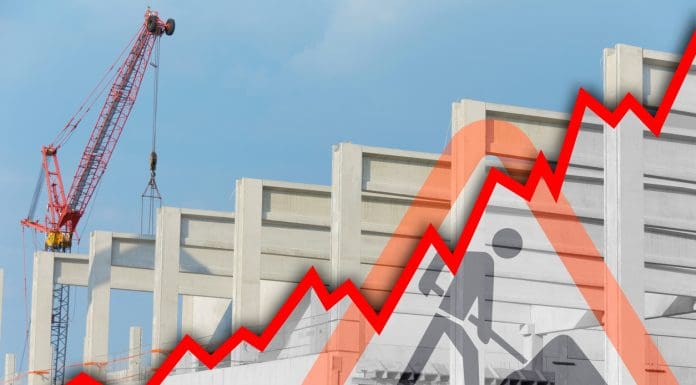
The McBains Construction Market Report – Summer forecasts a gradual recovery supported by easing inflation, falling interest rates, and targeted public investment — yet warns that persistent headwinds demand strategic agility from developers, contractors, and investors
After years of turbulence driven by Brexit, COVID, and geopolitical shocks from Ukraine to the Middle East, the UK construction sector is edging towards stability.
UK GDP is expected to grow by 1.0% in 2025 and 1.9% in 2026, below pre-pandemic norms but signalling a stabilising climate. Interest rates, which peaked at 5.25% in 2023, have eased to 4.25% by mid-2025 and are projected to reach 3.75% by year-end. Central banks in Europe and the US are also moving towards lower rates, indicating a coordinated shift that could ease financing costs globally.
Risks remain from lingering inflation, geopolitical instability, and trade tensions. New US tariffs on imported materials may raise input costs for UK projects, though diverted steel exports could temporarily soften domestic prices.
Sector growth forecasts
UK construction output is projected to reach £168.6bn in 2025, up 1.9% year-on-year:
- Private Housing: +4.0% in 2025, +7.0% in 2026, driven by government targets of 1.5m new homes by 2029.
- Infrastructure: +1.8% in 2025, +4.5% in 2026, led by energy transition and water schemes under the new NISTA.
- Industrial: +1.0% in 2025, +2.6% in 2026, supported by logistics and advanced manufacturing.
- Commercial: Slow rebound due to muted investor confidence and shifting workplace demand.
- Build-to-Rent: Remains buoyant, while public-sector regeneration continues to underpin workloads regionally.
The Building Safety Act effect
The Building Safety Act 2022 is reshaping delivery for Higher-Risk Buildings through stricter approvals, competency requirements, and digital “Golden Thread” record-keeping. While improving safety, these changes can extend timelines by up to 36 weeks and raise costs. Early regulator engagement, front-loaded compliance investment, and adapted procurement strategies are now essential.
Cost pressures and labour shortages
Tender prices are forecast to rise 15% between mid-2025 and mid-2030, with 10% of that growth concentrated in 2025–2028. Labour shortages are acute: over 500,000 workers are expected to retire within 15 years, while apprenticeship uptake fell 11% in 2023. Wage growth (+4.6% YoY in Q1 2025) is outpacing many sectors. Material prices remain mixed, with declines in fabricated structural steel (-10%) but increases in precast concrete (+5.1%).
Procurement and risk management
Record insolvencies — 4,056 construction firms collapsed in the year to May 2025 — are driving risk-averse behaviour among contractors. Emerging strategies include:
- Resurgence of Construction Management models
- Splitting M&E packages into smaller contracts
- Co-investment models aligning contractor and client returns
These approaches mirror trends in the US and Middle East for complex, high-value schemes.
Lessons from abroad
Q1 2025 saw UK construction material exports rise 1.5% while imports fell 0.8%, narrowing the trade gap. Shifts in steel trade flows may ease prices short-term but threaten producer viability. Globally, Europe faces the same labour shortages as the UK, the US is navigating cost pressures from tariffs, and Asia-Pacific offers lessons in compliance-driven delivery.
Strategic priorities for senior leaders
To navigate the next five years, McBains identifies five priorities:
- Lock in material prices early to manage cost inflation.
- Build talent pipelines to address looming labour gaps.
- Adapt procurement models for flexibility and risk-sharing.
- Turn compliance into a competitive edge under the BSA.
- Track global policy shifts affecting supply chains and capital flows.
With interest rates falling, inflation easing, and targeted investment flowing, the sector is moving into a phase of cautious optimism. Firms prepared to adapt, innovate, and engage early in project planning will be best positioned to convert stability into sustainable growth.
The post Stability on the horizon for UK construction, reports McBains appeared first on Planning, Building & Construction Today.

